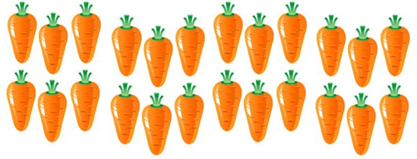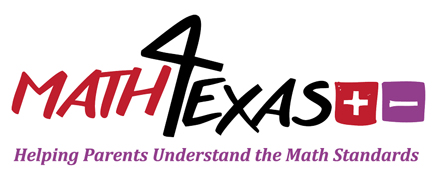T.I.P.S.
-
 Students should model and describe contextual division situations using concrete objects. In second grade, students are beginning to lay the foundation of division so they may use the vocabulary of ___ separated into ___ equal groups equals ___ in each group or ___ separated into ___ in each group equals ___ equal groups.There are two types of division, partitive division, and quotative division. Partitive division is where the total amount and number of groups are known and the size or measure of each group is unknown. For example, ___ separated into ___ equal groups equals groups of ___ or 18 candies are separated into 6 equal groups of 3. Quotative division, also known as measurement division, is where the total amount and size or measure of each group known, but the number of groups is unknown. For example, ___ separated into ___ in each group equals ___ equal groups or 21 candies are separated into 3 in each group equals 7 equal groups. Second grade students do not learn and memorize division facts as this is appropriate for third grade.
Students should model and describe contextual division situations using concrete objects. In second grade, students are beginning to lay the foundation of division so they may use the vocabulary of ___ separated into ___ equal groups equals ___ in each group or ___ separated into ___ in each group equals ___ equal groups.There are two types of division, partitive division, and quotative division. Partitive division is where the total amount and number of groups are known and the size or measure of each group is unknown. For example, ___ separated into ___ equal groups equals groups of ___ or 18 candies are separated into 6 equal groups of 3. Quotative division, also known as measurement division, is where the total amount and size or measure of each group known, but the number of groups is unknown. For example, ___ separated into ___ in each group equals ___ equal groups or 21 candies are separated into 3 in each group equals 7 equal groups. Second grade students do not learn and memorize division facts as this is appropriate for third grade.
Example
-
Read the following problem situations and solve. You may need paper and pencil to solve each problem.a) Mrs. Cole picked 15 tomatoes from her garden. She wants to pack 5 tomatoes in each bag. How many bags can she pack? Draw a picture of Mrs. Cole’s bags and explain your thinking.
b) Sally planted 12 sunflowers in her grandmother’s garden. She planted them in three rows. How many sunflowers did Sally plant in each row? Draw a picture of Sally’s sunflowers and explain your thinking.c) Daniel picked carrots from his garden. Write a division story about Daniel’s groups of carrots that are shown below.
Resources
-
Click on the following links for more information.
TEKS
-
2.6 Number and operations. The student applies mathematical process standards to connect repeated addition and subtraction to multiplication and division situations that involve equal groupings and shares. The student is expected to:(B) model, create, and describe contextual division situations in which a set of concrete objects is separated into equivalent sets





 Click
Click 

